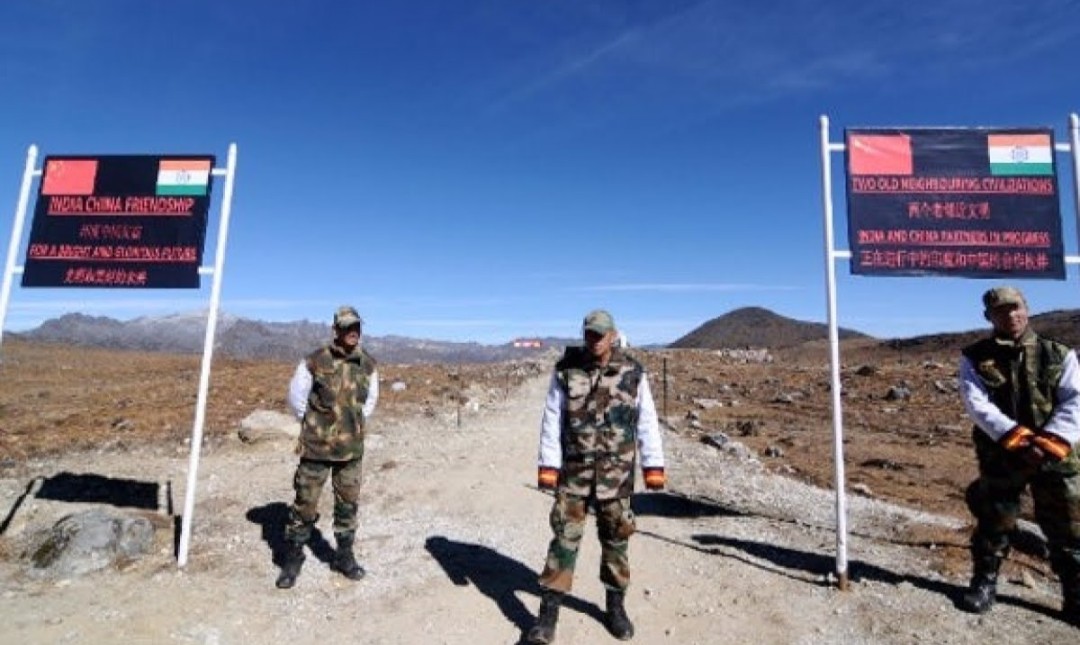Commanders emphasise need for expeditious, phased and stepwise de-escalation.
The third round of Corps Commander-level talks on Tuesday between India and China, the second one after the June 15 Galwan Valley clashes, yielded the promise of more talks at the military and diplomatic levels to disengage at the “face-off sites” along the Line of Actual Control (LAC).
Twenty Indian soldiers were killed by Chinese troops in close quarter combat in Galwan Valley while Beijing has not given any official figure of their dead or wounded.
Rajnath to visit Ladakh
In another sign that India is now taking the Chinese build-up along he LAC seriously, it was made known that Defence Minister Rajnath Singh will visit Ladakh on Friday.
“Both sides have emphasised the need for an expeditious, phased and stepwise de-escalation as a priority,” an Indian military source said. “This is in keeping with the agreement between External Affairs Minister and his Chinese counterpart during their conversation on June 17 that the overall situation would be handled in a responsible manner, and that both sides would implement the disengagement understanding of June 6 sincerely.”
To achieve this, more meetings are expected both at the military and the diplomatic level to arrive at a mutually agreeable solution and to ensure peace and tranquillity along the LAC as per bilateral agreements and protocols, the source stated.
The talks between Lt. Gen. Harinder Singh, General Officer Commanding of the Leh-based 14 Corps, and Maj. Gen. Liu Lin, Commander of the South Xinjiang Military District, began around 11 a.m. at the border meeting point at Chushul on the Indian side and went on for over 12 hours.
The process of disengagement was complex, the source said. The meeting was long and held in a business-like manner keeping in view the COVID-19 protocols and the discussions reflected the commitment of both sides to reduce the tensions along the LAC.
It has been learnt that both sides agreed to take forward the stalled process of disengagement agreed earlier at all friction points in Ladakh. In the first round of senior commander talks on June 6, both sides identified five conflict areas, Patrolling Point (PP) 14, 15 and 17A, North of Pangong Tso and Chushul, and agreed for limited “de-escalation” from some of these areas. It was during this “de-escalation” process near PP 14 in Galwan Valley that the clash occurred claiming 20 Indian soldiers’ lives and an unknown number of casualties on the Chinese side.
Chinese response
Responding to questions on the talks, Chinese Foreign Ministry spokesperson Zhao Lijian said, “The two sides continue working towards implementing the consensus reached at the two earlier rounds of commander-level talks and made progress in effective measures by front line troops to disengage and de-escalate the situation.”
“China welcomes that,” Mr. Zhao stated emphasising the need to keep close communication through military and diplomatic channels to ease the situation and reduce the temperature along the border.
Earlier consensus
At the second round of talks on June 22 too, the two sides came to a “mutual consensus” to disengage along the LAC and the modalities for disengagement from all friction areas in eastern Ladakh were discussed. However, there has been no progress on the ground since.
On the contrary, between the Galwan clash and the second round of talks, satellite images show that China has rebuilt the observation point and also additional defensive positions at Galwan. Similarly, there has been further consolidation of positions and additional defences at Finger 4 area of Pangong Tso and also along the ridges overlooking Indian positions.
There has also been massive build-up by China in the Despang plains, which lies close to the crucial Darbuk-Shyok-Daulat Beg Oldi (DSDBO) road linking the Sub Sector North on one side and the Siachen glacier on the other.
India’s demand
India’s consistent demand has been the restoration of status quo ante of pre May 5 positions and de-induction of forces built up by China along the LAC. China has undertaken massive mobilisation of forces, tanks, armoured vehicles, air defences and fighters close to the LAC. India too has moved in additional divisions, tanks and artillery to match Chinese deployments.
The disengagement was going to be a long drawn, step-by-step process with pullback of troops from each of the locations in a phased manner after verification, a defence source said. The major issue was of verifying the compliance by China given the earlier experience, the source added referring to the Galwan clash.
Mr. Singh’s visit to Ladakh will be his first since the beginning of the stand-off in early May. Accompanied by Army Chief Gen. Manoj Naravane, Mr. Singh is likely to review the situation with senior military commanders and interact with troops, a defence source said. Mr. Singh is also likely to visit the Leh military hospital where several soldiers injured in the Galwan clash on June 15 are being treated.
With inputs from The Hindu

